Many weddings in 18th-century colonial America occurred during the holiday season, often taking place during the “Twelve Days of Christmas”. Famous weddings of the era include George Washington and Martha Dandridge Custis on Twelfth Night, January 5, 1759, and Thomas and Martha Jefferson, who married on New Year's Day, January 1, 1772.
Wearing head-to-toe white was not conventional for bridal fashion until Queen Victoria’s wedding in 1840. While white was a color associated with bridal dress in the 18th century, it was usually limited to the millinery (accessories) that complemented the gown. A bride might have worn a white quilted petticoat, or white shoes, or have carried a white fan. An entire branch of the millinery trade aptly called "white millinery" supplied these details for the bride (as opposed to "black millinery," which focused on mourning accessories).
When it came to choosing the gown for the big day, a bride would choose whatever color or style she liked. Many weddings in colonial Virginia happened in the morning and were often held at the bride’s home or the bride’s parents’ home. Because of this, the bridal gown would be a more informal style of dress that could be worn as part of her regular wardrobe after the wedding day. This past holiday season, our mantua-makers from the Margaret Hunter Shop created a wedding gown that would have been fitting for an 18th-century bride, using tools, techniques, and materials that would have been found in the 1700s.
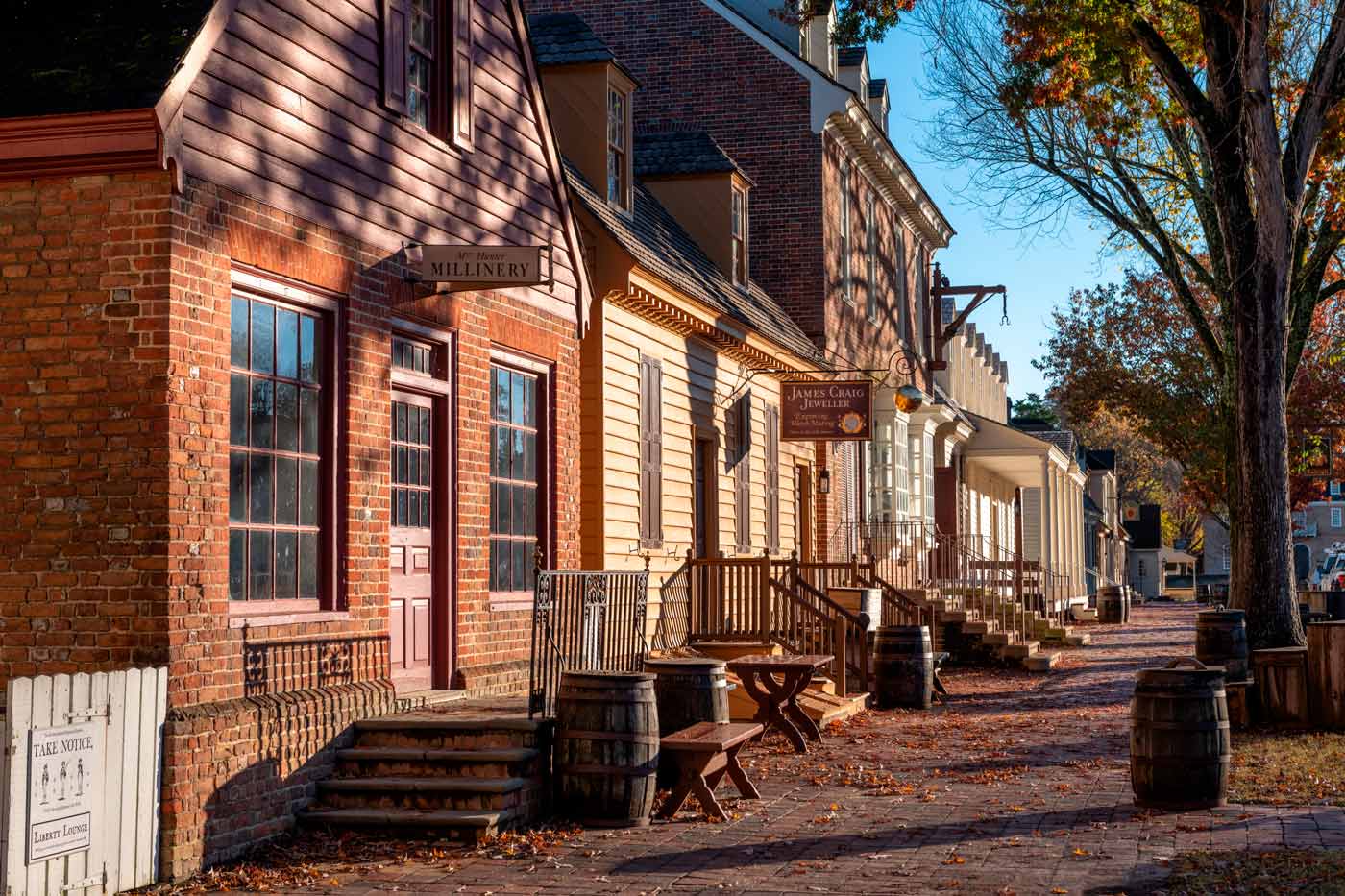
The gown created is closely inspired by a 1769 portrait of Isabella, Viscountess Molyneux (later, the Countess of Sefton) by Thomas Gainsborough.

The fabric used for the gown is a striped gold silk taffeta fabric with a heavier thread running into the weave. The addition of heavier thread helps create more texture and dimension. It took approximately eight yards of fabric woven to a modern width to make the gown and trim. As is the case with most 18th-century gowns, the bodice and sleeves are lined with mid-weight linen to both stabilize the silk and provide an additional barrier layer between the skin and outer fabric.
In today’s world, similar silk is woven between 54-60 inches wide, but in the 18th century, it was less than half this width, meaning it would have taken at least twice as much yardage to complete the same style.

Like everything produced within our shop, the gown was completely stitched by hand. Between cutting, fitting, and stitching, the finished gown took approximately 45 hours to complete.
To properly fit the gown, the fabric would be cut directly on the body over the lady’s stays. Historically, mantua-makers did not take measurements or create patterns but worked directly on the customer’s form, molding and sculpting the fabric into the gown’s shape. This technique is like what we modernly refer to as “draping,” with the exception that the cutting is done in the garment fabric itself, rather than a muslin that is later transferred to the fabric.
Three fittings are all that are needed to create the gown. In the first fitting, the basic shapes of the bodice and sleeves are cut.
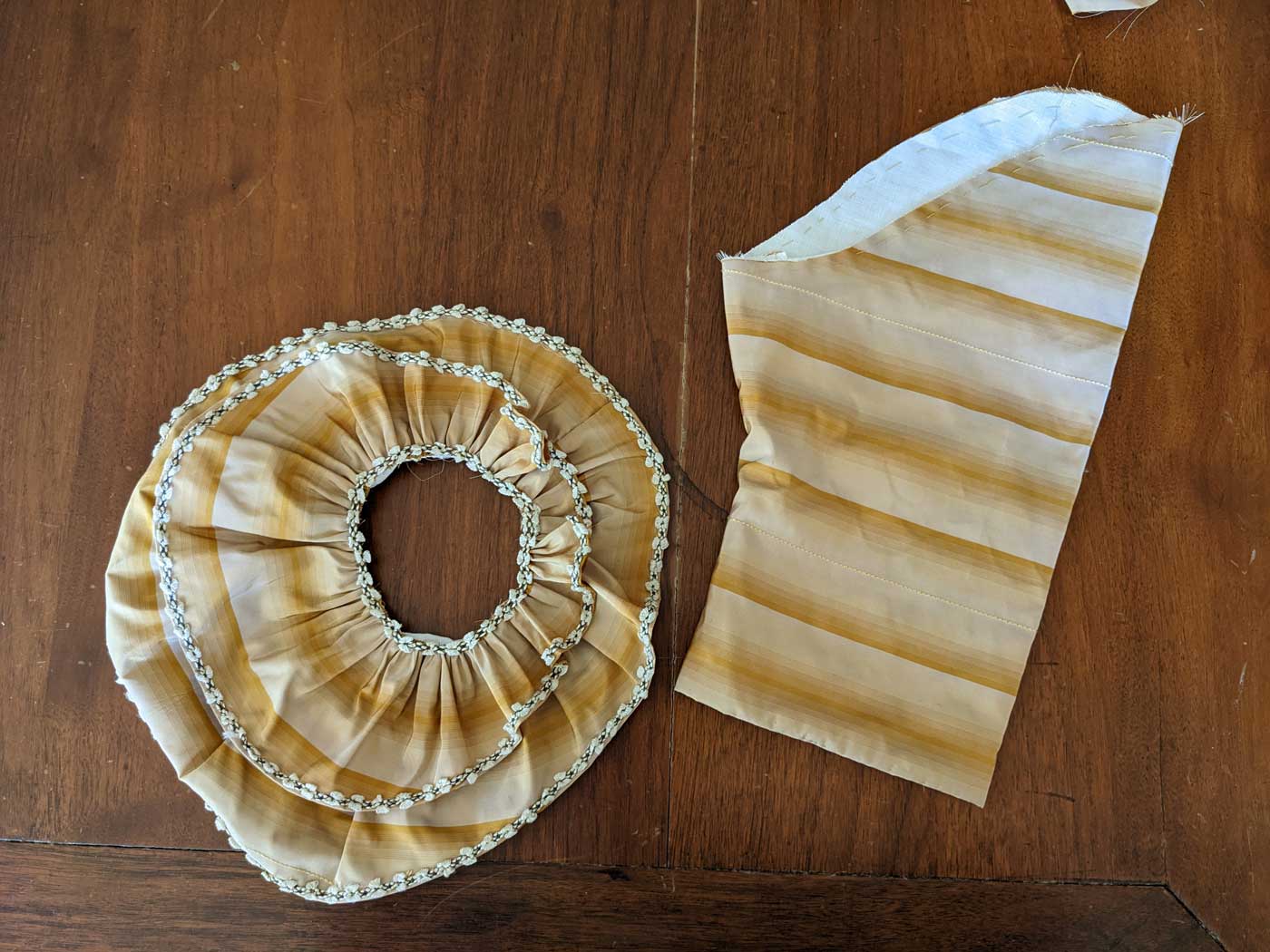
In the second fitting, the finished fronts and the back of the gown are joined together. Once these are stitched, and the skirts secured, the final fitting sets the shoulder straps and the sleeves.
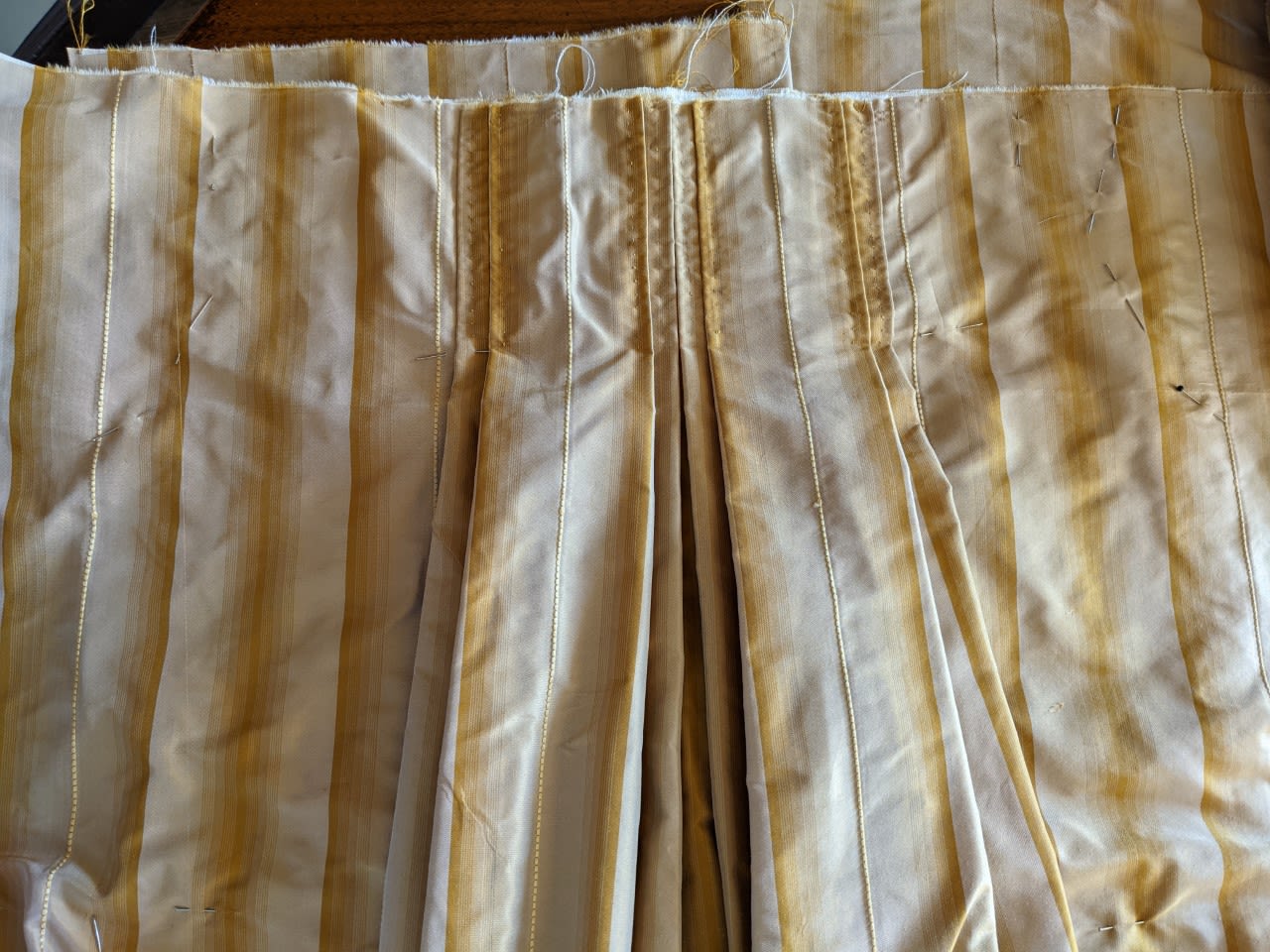
The gown itself is made up of three pieces:
- The gown, which is put on like a jacket from behind
- The petticoat, which consists of a skirt that goes all the way around the lower body
- The stomacher, which is the triangular insert piece that fills in the center front of the gown

The size of the gown is adjusted by pinning the stomacher to the side of the gown with more or less fabric overlap, depending on the needs of the lady.
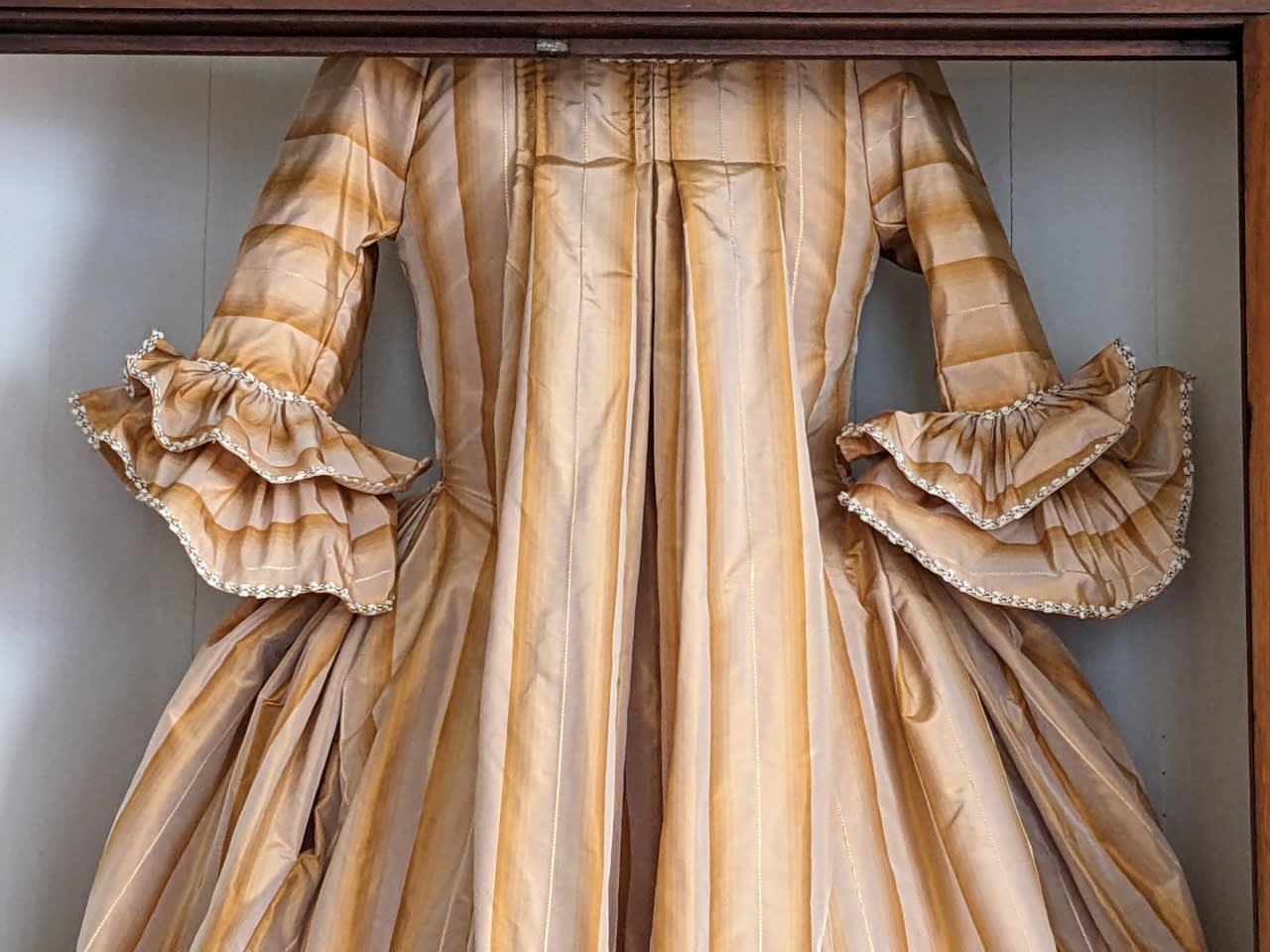
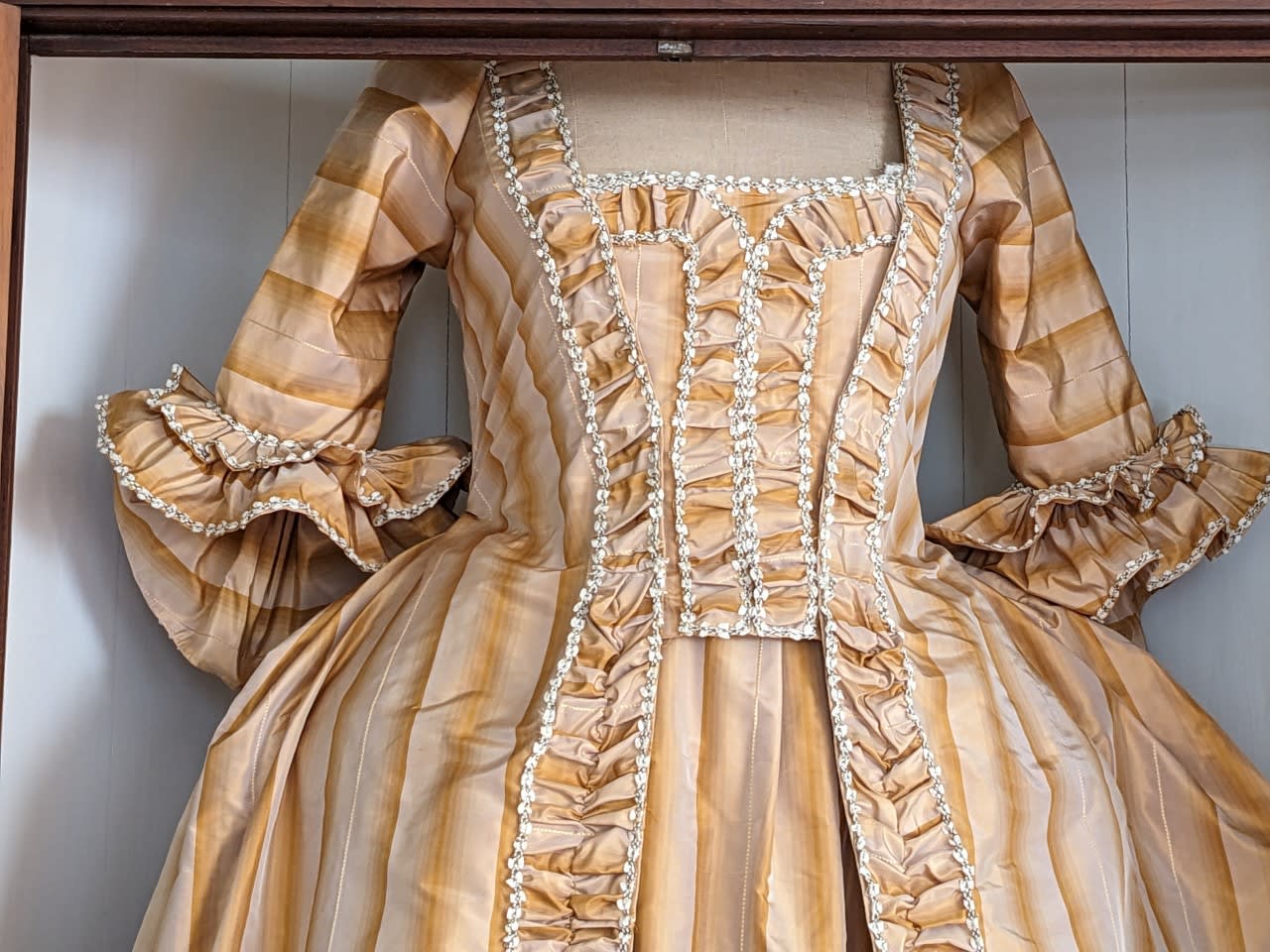
And there you have it! In just a few days, a bride has a new wedding gown. On your next visit to the Historic Area, be sure to visit the Milliner and Mantua-Maker. For more information on when the shop is open, please visit their hours of operation.

Colonial Williamsburg is the largest living history museum in the world. Witness history brought to life on the charming streets of the colonial capital and explore our newly expanded and updated Art Museums of Colonial Williamsburg, featuring the nation’s premier folk art collection, plus the best in British and American fine and decorative arts from 1670–1840. Check out sales and special offers and our Official Colonial Williamsburg Hotels to plan your visit.
